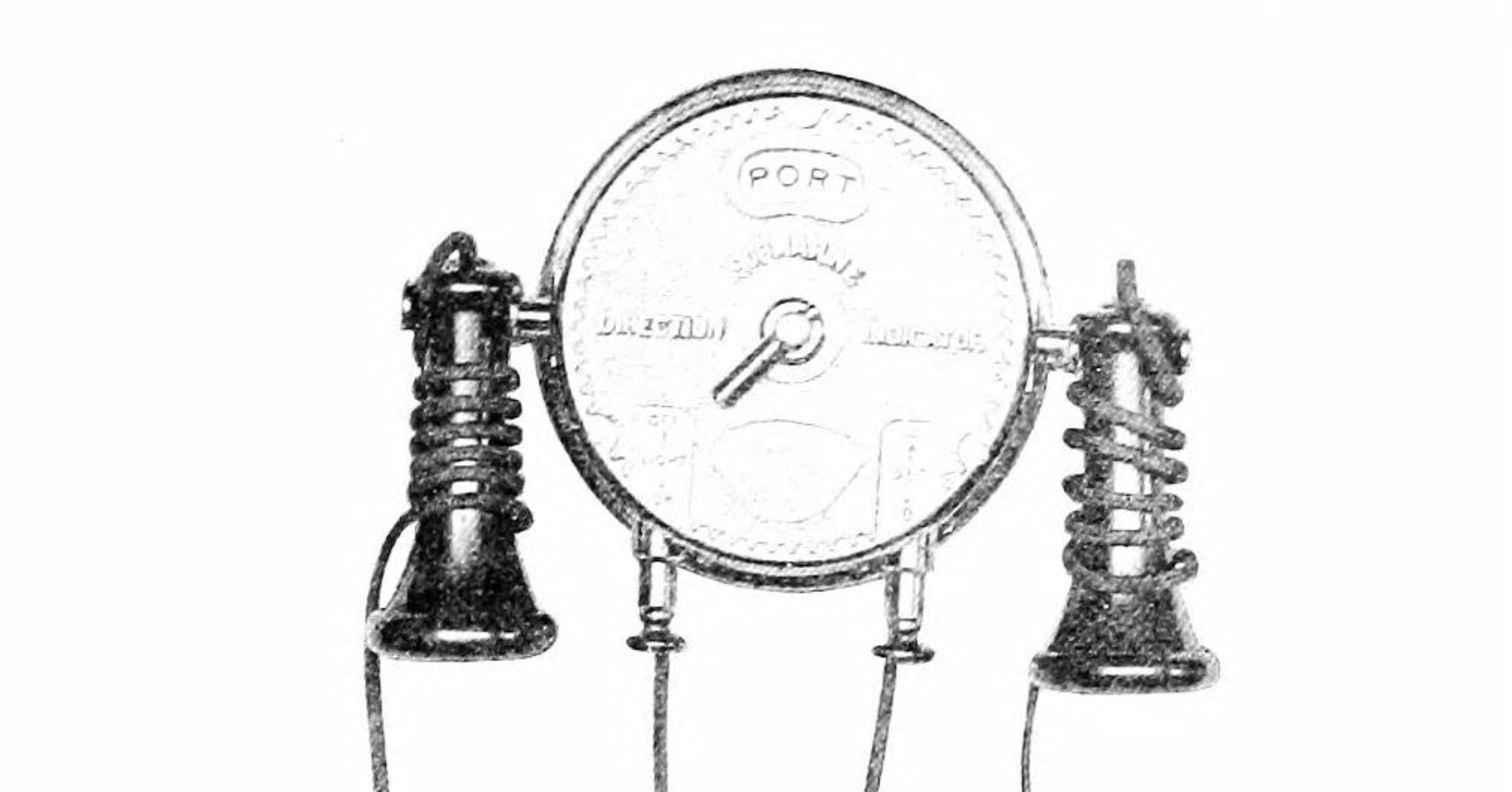At the start of the twentieth century, the Submarine Signal Company of Boston1Submarine signals by Submarine Signal Company, Boston developed a system of electric bells that could be installed below water in lightships or, potentially, buoys. These could transmit underwater signals.
Sound travels four times faster in water than in air and is unaffected by fog or wind. The system was claimed to be easy to use and capable of giving a bearing to within a quarter point at a range of around twelve miles, comparable to a lighthouse in clear weather.

Submarine signals by Submarine Signal Company, Boston
The company rented receiving equipment to ships: this had port and starboard microphone chambers connected to a receiving station. Using this an operator could determine the range and direction of the signal.
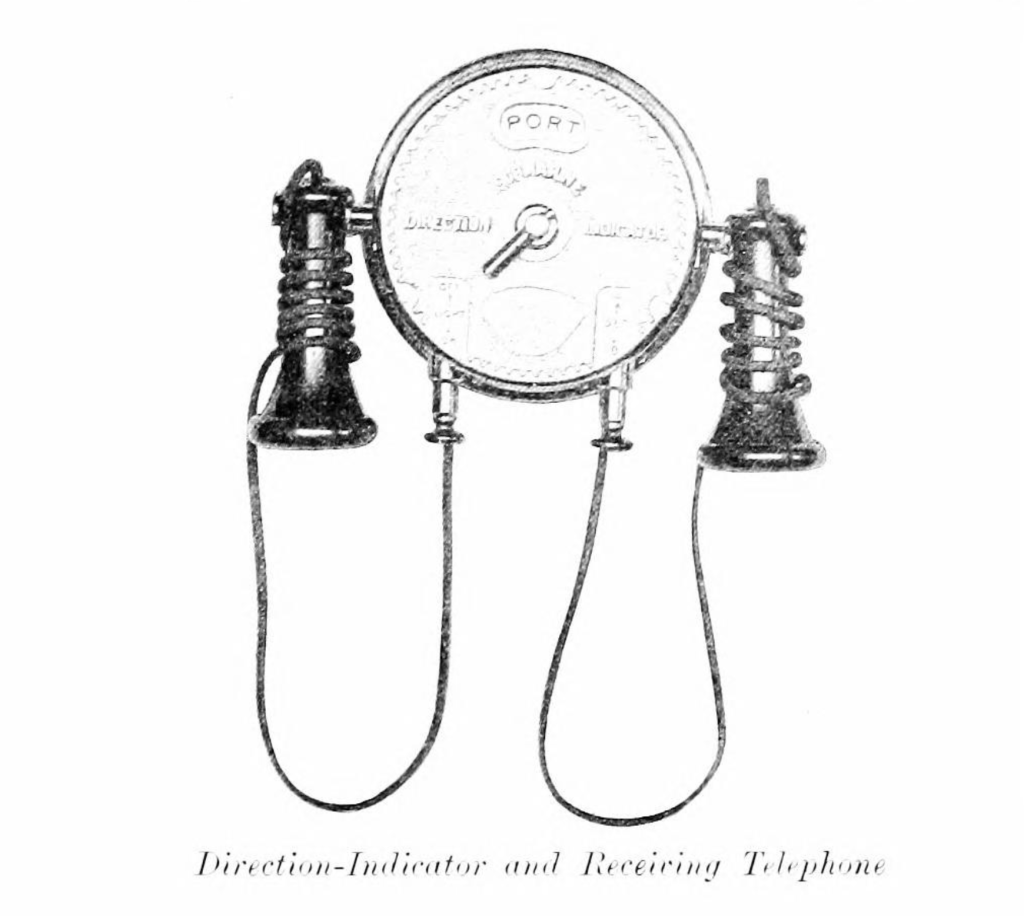
The system was fitted to most major liners and some naval vessels. By the early twentieth century, all major ports along the U.S. East Coast used the system, and there were many installations in Northeast Europe. The U.K. was slow to adopt the system although there was an installation at Liverpool.
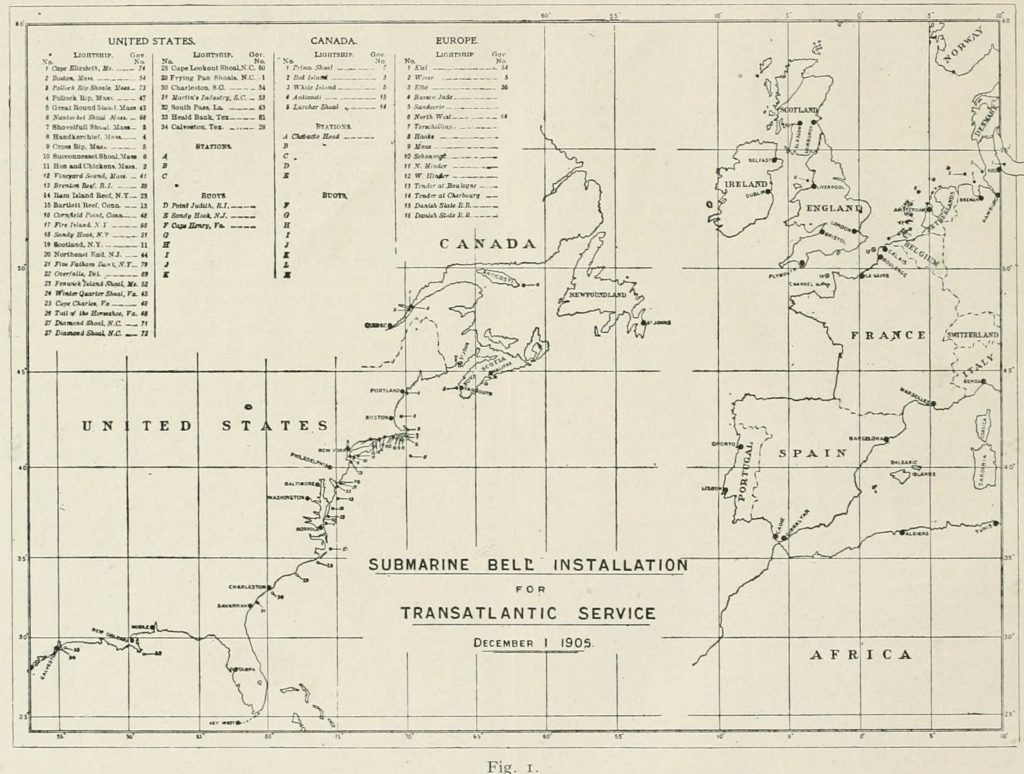
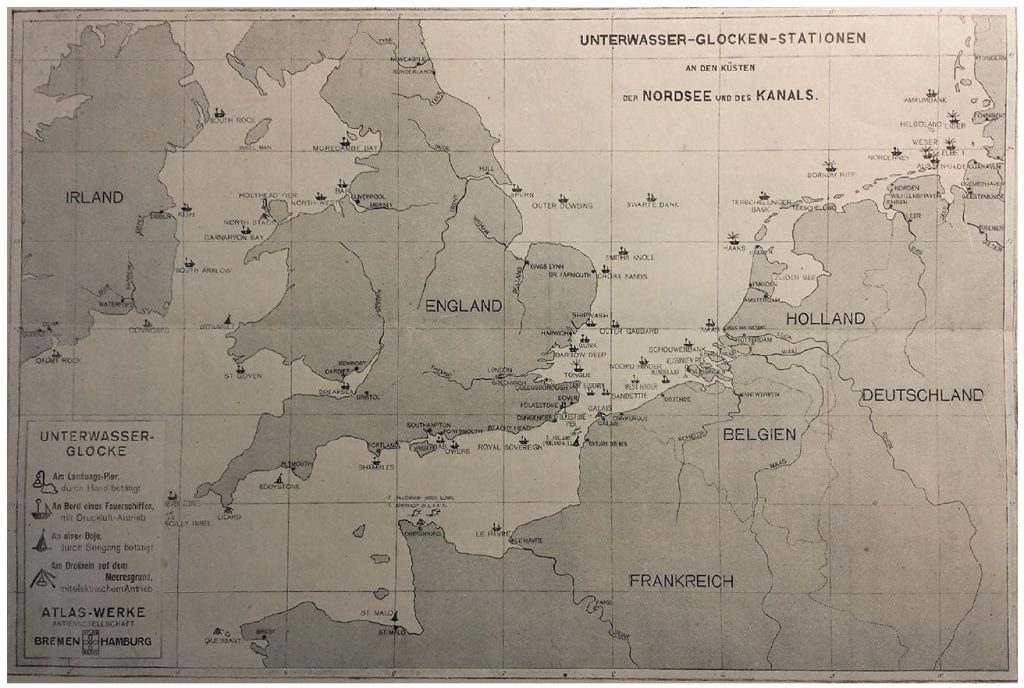
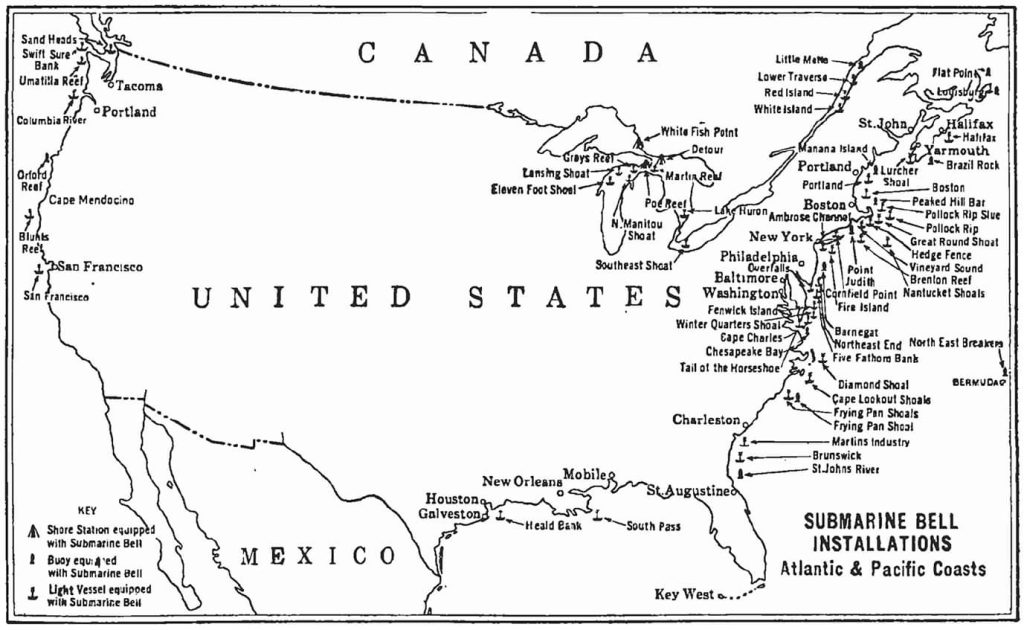
To quote the words of the report made by a Committee of Officers of the Royal Navy to the British Admiralty :
The fog signals at present in use cannot be depended on to be heard under all conditions, even at two miles’ distance. and a vessel failing to make out a fog signal may be on a safe course, and in her estimated position, yet she must stop or anchor or alter her course because she is uncertain. The submarine bell increases the range at which the fog signal can be heard by a vessel until it approximates to the range of a light-vessel’s light in clear weather ; and, moreover, its bearings can be determined with quite sufficient accuracy for safe navigation in fog from distances far beyond the reach of aerial fog signals if the vessel is equipped with receivers. To double or treble the distance at which fog signals can be heard is a great advantage to shipping, and the facility of determining the direction of sound signalling is in itself a very valuable discovery. The installation of submarine bells in light-vessels must come sooner or later, as is proved by the rapid extension any nation has given it who has adopted this system in one or two light-vessels.
Notes
Explanatory article with map in 1907 Marine Engineer Magazine.
See FURTHER RESULTS OF SUBMARINE SIGNALLING BY MEANS OF SOUND.
Also History: Historical Documents: Submarine Signaling: NOAA Office of Ocean Exploration and Research
Footnotes
- 1Submarine signals by Submarine Signal Company, Boston
- 1Submarine signals by Submarine Signal Company, Boston
